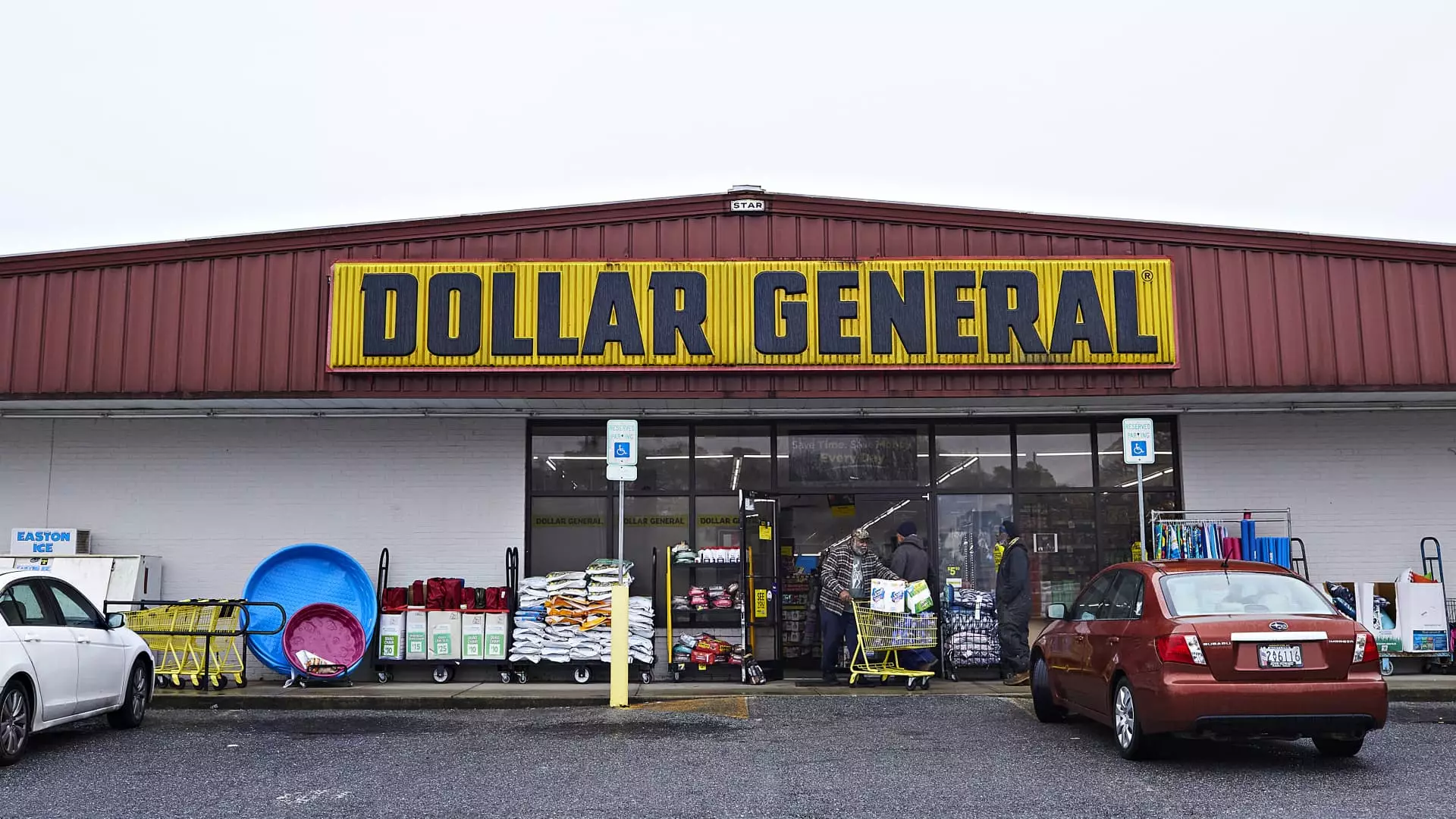Dollar General has emerged as an unexpected frontrunner in the stock market since President Donald Trump was inaugurated for his second term. The discount retailer’s stock has skyrocketed over 36%, distinguishing itself as a leading performer within the S&P 500, only trailing behind tech innovator Palantir and tobacco giant Philip Morris International. This surge has prompted significant attention in market circles, not merely due to its impressive financial performance but as a potential harbinger of change in consumer behavior amid an uncertain economic climate fueled by inflation and tariff-related anxieties.
Investors are pivoting from growth-oriented investments to safer, more stable companies specializing in essential goods. Historical patterns suggest that dollar stores tend to thrive when macroeconomic conditions take a downturn. Arun Sundaram, a senior vice president at CFRA Research, elucidates this point, noting the resilient nature of dollar stores in softer economic scenarios. This scenario could be a critical focus, shedding light on how Dollar General’s stock might continue to perform if wider market fears are realized and economic challenges deepen.
A Competitive Edge in Commodity Sales
What sets Dollar General apart from competitors like Dollar Tree and Walmart comes down to its strategic product mix. With consumables—a category that embodies daily essentials—making up over 82% of Dollar General’s sales, the retailer is less vulnerable to international trade tensions than others primarily selling discretionary items. In contrast, only about 48.8% of Dollar Tree’s sales fall into the same category, implying a heavier reliance on imported merchandise, which carries greater exposure to tariffs. According to analysts, this lesser exposure gives Dollar General a distinctive edge as it navigates through the turbulence generated by proposed tariffs and ongoing trade negotiations.
There’s an unvarnished reality here: inflation-driven expenses are at the forefront of consumer concerns. While Dollar General’s leadership emphasizes a back-to-basics approach aimed at boosting productivity and revitalizing existing stores, it remains crucial to recognize the broader implications of a sustained economic downturn. Should inflation continue to rise unchecked, the retail environment could take on a more challenging aspect, particularly for a brand catering to lower-income customers—its core demographic.
Competitors Lurking in the Shadows
Despite its recent success, Dollar General should not underestimate the immense competition it faces from retail behemoths such as Walmart, Amazon, and Costco. These giants possess extensive online platforms that allow them to submit compelling offers, particularly with the increasing popularity of delivery services. Notably, Walmart’s e-commerce program, Walmart+, is seeing traction and poses a tangible threat to Dollar General’s market share. Analysts warn that this might siphon off foot traffic from dollar stores, potentially dampening the recent surge in Dollar General’s stock performance.
Company strategies focused solely on cornering low-income shoppers may be shortsighted, particularly when one evaluates the potential “trade-down” effect stemming from middle-income consumers opting for more budget-friendly shopping alternatives. The shifting landscape of consumer behavior raises eyebrows—can Dollar General adapt quickly enough to maintain its momentum?
The Harsh Reality of Economic Pressures
Even as Dollar General champions recent gains, looming threats could hinder future performance. The fear is palpable that Trump’s tariff hiatus may not sustain itself if concrete trade agreements remain elusive. This uncertainty generates a cascading effect of inflation that mercilessly targets Dollar General’s core consumer base. Moreover, proposed changes to the Supplemental Nutrition Assistance Program could further stress lower-income groups.
Analysts observe a persistent need for Dollar General to grow beyond its traditional customer base to endure mounting challenges. While rising middle-income shoppers have recently bolstered its sales figures, it’s imperative to question whether this surge can compensate for potential losses among its lower-income customers, who are themselves increasingly stretched thin. As Joe Feldman of Telsey Advisory Group points out, “The demand is strong from their customer, but the ability to fulfill that demand is not as strong these days.” This acute pressure underscores a vital truth: success in the discount sector doesn’t merely rely on current stock prices; it hinges on a brand’s ability to adapt and respond to the vicissitudes of economic realities.
Dollar General’s trajectory raises intriguing yet perplexing questions about where the company will stand in the ever-evolving retail landscape. As the economic winds shift, the interplay between consumer demand, competitive pressures, and broader macroeconomic factors will undoubtedly shape the future of this storied retailer. The next chapter in its story promises to be as riveting as it is uncertain.

